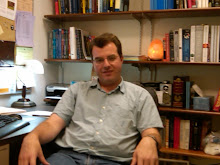I just read First Class by Alison Stewart, a history of what was once America's finest high school for African American students. It is a rather tragic story: During segregation, African American students in DC were limited to just a few high schools (the number depending on the era), and the "academic" school (to contrast with a nearby vocational school) was Dunbar high school.
Admission was selective, so only the best African American students got in, and the results were exactly what you'd expect when you have selective admission from a pool of students whose parents wanted them to be there: Absolutely outstanding. Over several decades, Dunbar's students frequently out-performed white kids (from a similarly selective high school) on academic measures. Dunbar alumni went to elite colleges, became doctors and lawyers and professors, broke barriers at military academies, and rose to the top of the arts. In short, they proved that talent and motivation know no color, and that excellent students of any group can hold their own against any other group, even groups that enjoy substantial advantages. It shows the cruel hollowness in systems of privilege, the way that such systems artificially elevate the mediocre while suppressing the excellence of human ability that is abundant in every group.
Perversely, Dunbar's excellence was destroyed at the same time that school segregation ended (thanks, in part, to lawyers who had graduated from Dunbar). The problem was not desegregation, but rather an effort to circumvent desegregation: Dunbar became a "neighborhood school." Desegregating schools didn't desegregate housing, and most neighborhoods remained either primarily black or primarily white. Consequently, making all schools serve their local neighborhood ensured that most schools would remain either primarily black or primarily white. Had Dunbar (and its white counterpart) remained selective then talented students of all races could have mixed, to the benefit of all.
Instead, schools remained racially segregated in practice, and the only integration that actually occurred was integration of the motivated and unmotivated into the same classroom, to the downfall of excellence. That's pretty much what you'd expect from the society that went on to make Donald Trump President (albeit several decades later). We Americans are a fiercely anti-intellectual bunch.
Since then, Dunbar has been exactly like any other school in DC, and as communities have deteriorated so has Dunbar. Later chapters describe the school with narratives that we hear for every troubled urban high school: A faculty with a mix of earnest and disenchanted people, an underachieving student body, and periodic attempts to "reform" (to little effect). There are people who keep their spirits up by focusing on the "diamonds in the rough", which is an ironic contrast with the era when selective admissions made it a well-stocked jewelry store of talent.
Sadly, this wasn't solely the doing of white people who wanted to avoid mixing talented white and black students. Apparently many African Americans resented Dunbar students and parents, seeing them as rich and elite. Some certainly were well-off by the standards of black people in DC several decades ago, but most were of modest means and just happened to have some mix of good brains and good upbringing. The book talks about this a bit, and one gets the sense that these resentments may have played a role in keeping Dunbar from returning to selective (albeit race-neutral) admissions. American anti-intellectualism knows no color, and Americans of every background resent smarty-pants types. Maybe our best hope for racial understanding is for people of all races to come together and discover that they all hate smart people.
Subscribe to:
Post Comments (Atom)



No comments:
Post a Comment